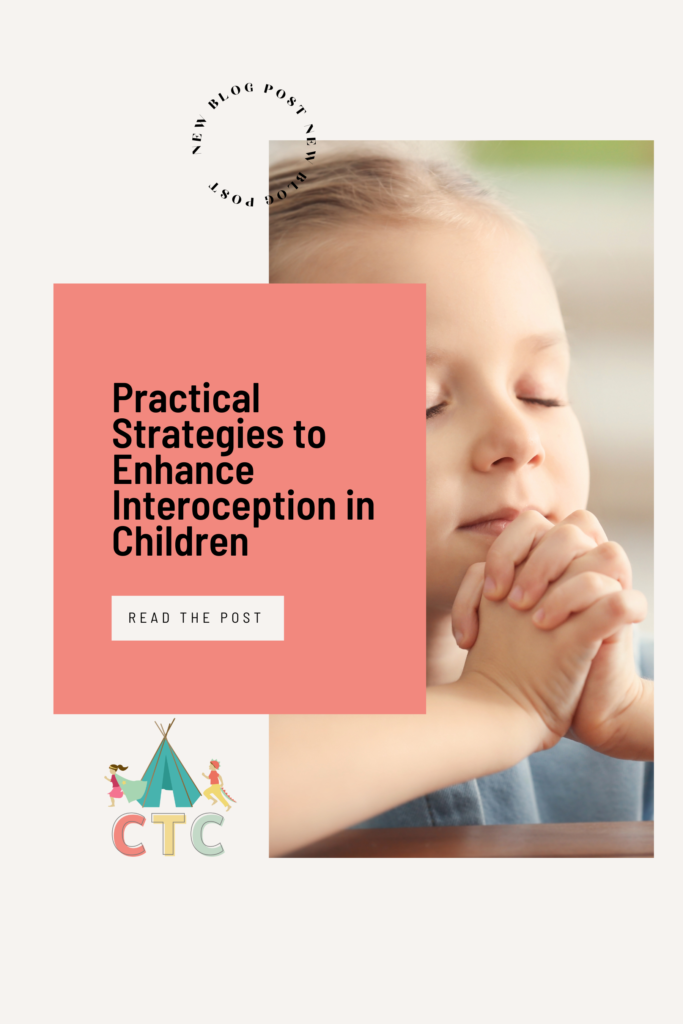
Understanding interoception is essential for children, as it helps them recognize and respond to internal body signals like hunger, fatigue, and emotions. For many kids, especially those with sensory processing disorder, developing interoceptive awareness can be challenging. At the Children’s Therapy Center, we are dedicated to providing occupational therapy strategies that empower children to tune into their bodies and manage their needs effectively.
Why Interoception Matters
Interoception plays a critical role in a child’s overall well-being. It affects their ability to:
- Recognize when they need to use the bathroom
- Identify hunger and fullness cues
- Manage emotions and stress levels
For children with sensory processing disorder, interoceptive challenges can lead to difficulties in daily activities, which may manifest as emotional outbursts, anxiety, or trouble with self-care routines. By enhancing interoceptive awareness, parents and caregivers can help children develop the skills necessary for better self-regulation and emotional management.
Practical Strategies to Enhance Interoception
Here are some effective strategies you can implement at home to support your child’s interoceptive development:
1. Routine Check-Ins
Establish regular times throughout the day for your child to check in with their body. Ask questions like, “Are you feeling hungry or full?” or “How does your body feel right now?” These check-ins can help children develop the habit of tuning into their physical sensations and recognizing their needs.
2. Sensory Play Activities
Engaging in sensory play can enhance a child’s awareness of their body. Activities such as playing with textured materials (like playdough or sensory bins), jumping on a trampoline, or using a swing can help children connect their physical sensations with internal body signals. These playful experiences encourage them to explore how their body feels during different activities.
3. Mindfulness Practices
Incorporating mindfulness techniques can significantly improve interoceptive awareness. Teach your child simple mindfulness exercises, like deep breathing or body scans. For example, during deep breathing, guide them to notice how their chest rises and falls, helping them become more attuned to their body’s responses.
4. Visual Schedules and Reminders
Visual supports can help children recognize their needs. Create a visual schedule that includes reminders for meals, bathroom breaks, and quiet time. This can be particularly helpful for children with sensory processing disorder who may struggle to notice these cues without prompts.
5. Emotional Connection Activities
Help your child make connections between their emotions and physical sensations through fun activities. You can create a feelings chart where they draw or use images to represent how they feel and what their body sensations are. Encourage discussions about different emotions and the body signals associated with them.
6. Physical Movement
Physical activities such as yoga, dancing, or simple stretching can improve body awareness. Encourage your child to participate in activities that require them to notice how their body feels, such as feeling their heartbeat after exercise or noticing muscle tension during stretches.
Conclusion
Enhancing interoceptive awareness is crucial for children’s emotional regulation and daily functioning. By implementing these practical strategies at home, you can support your child’s journey toward better self-awareness and emotional management. At the Children’s Therapy Center, we are committed to helping children with sensory processing disorder and other challenges through tailored occupational therapy approaches that focus on interoception. Together, we can empower your child to connect with their body and thrive!







